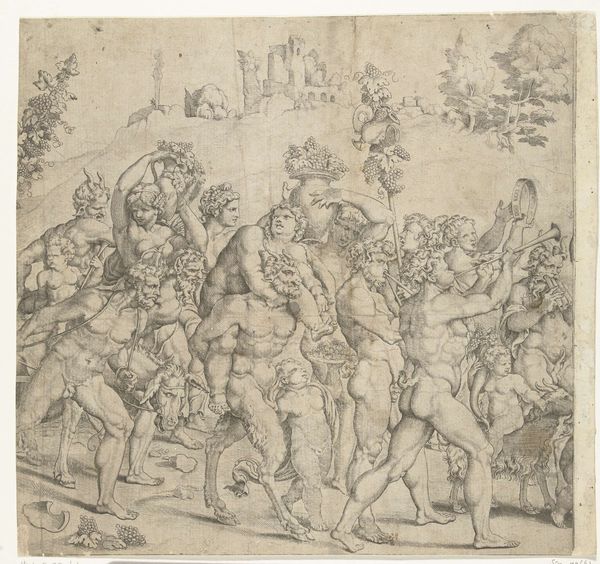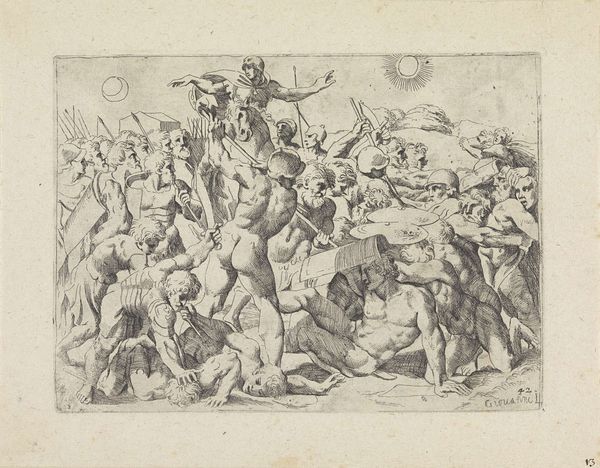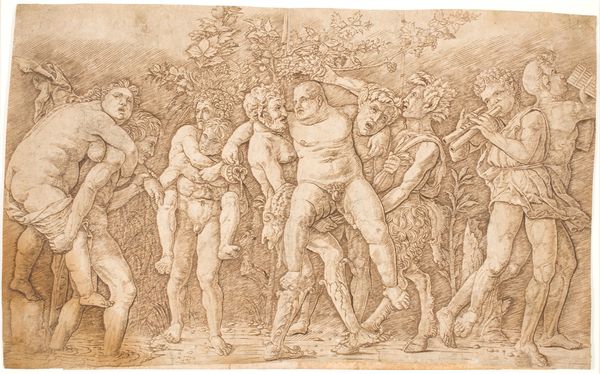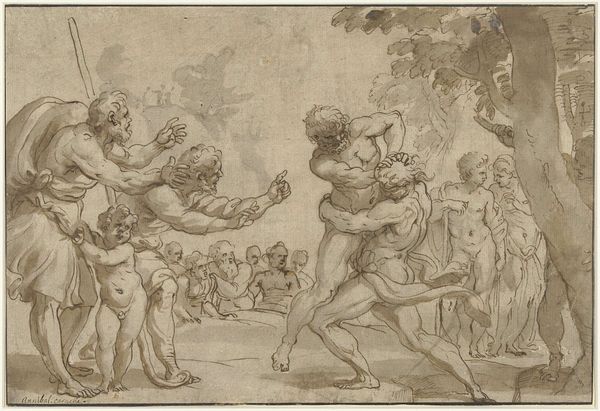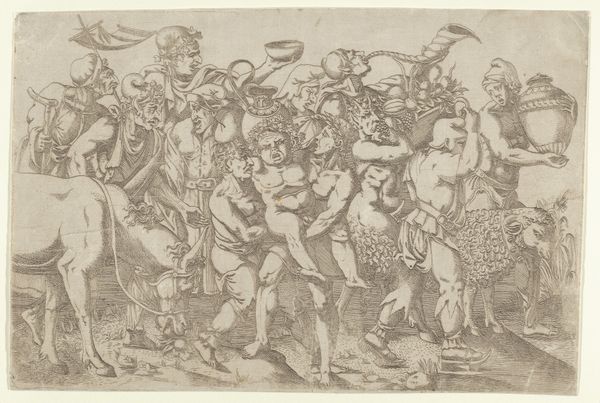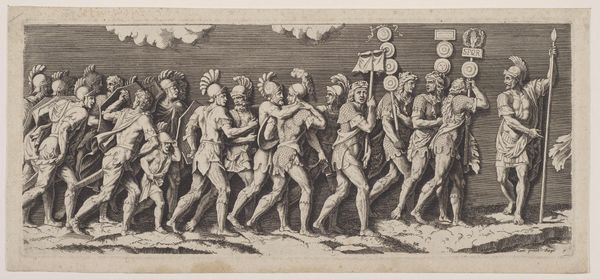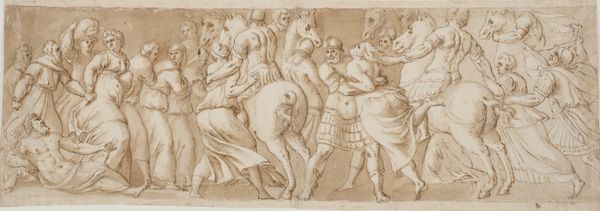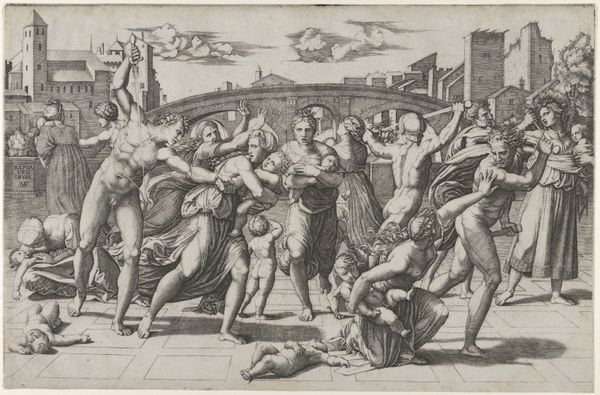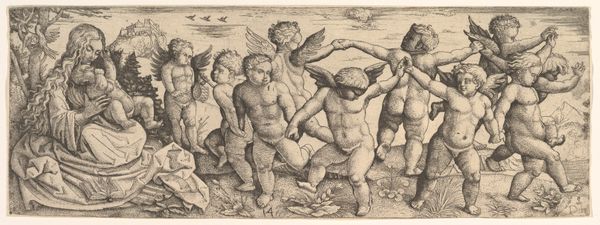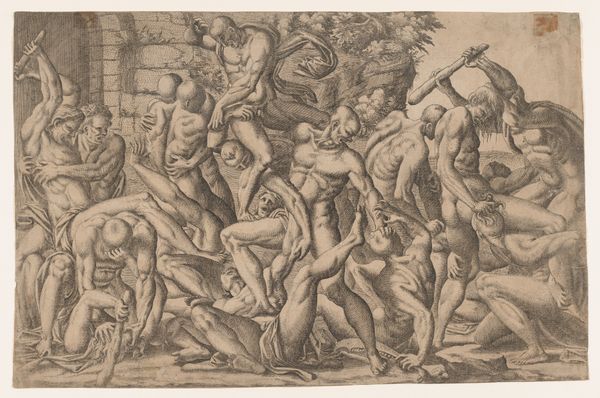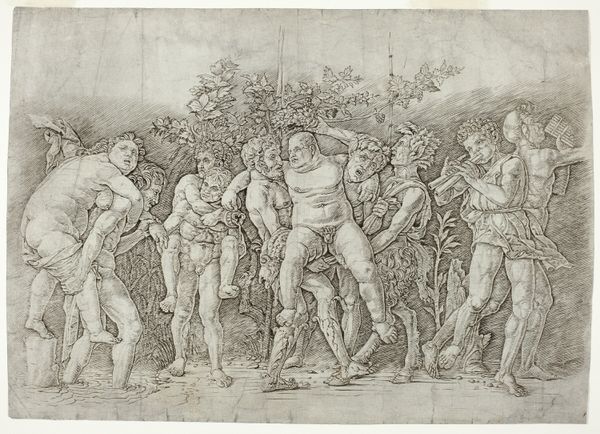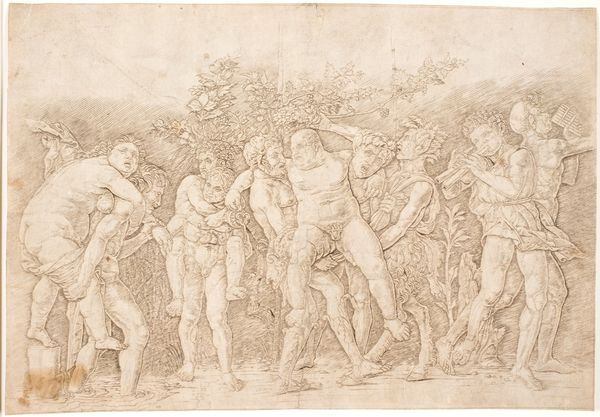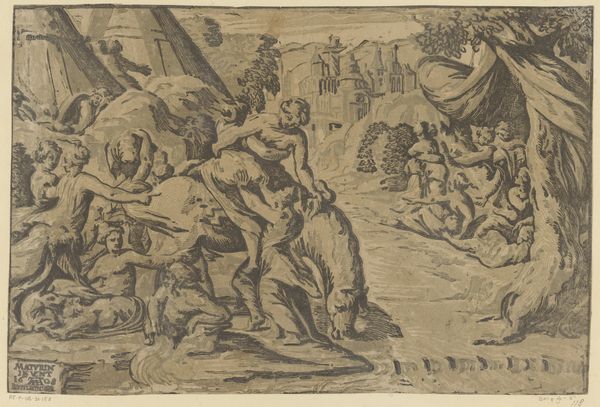
drawing, engraving
#
drawing
#
toned paper
#
narrative-art
#
pen sketch
#
pencil sketch
#
figuration
#
11_renaissance
#
personal sketchbook
#
ink drawing experimentation
#
pen-ink sketch
#
pen work
#
sketchbook drawing
#
history-painting
#
storyboard and sketchbook work
#
northern-renaissance
#
nude
#
sketchbook art
#
engraving
Dimensions: height 167 mm, width 199 mm
Copyright: Rijks Museum: Open Domain
Editor: This is "Vrouw bereidt de doding van een gevangene voor," or "Woman preparing the killing of a prisoner," a drawing by Theodor de Bry, likely made between 1583 and 1592. It looks like an engraving or a very detailed pen sketch on toned paper, full of figures in what seems like a ritualistic scene. The title definitely gives a sense of dread, but what do you see happening here, from a historical perspective? Curator: Well, De Bry was known for illustrating accounts of early European exploration and colonization. This image likely reflects a European perception—or perhaps *mis*perception—of Indigenous rituals. It's crucial to remember that these images weren't neutral; they served a colonial agenda. How do you think this drawing might have influenced public opinion back in Europe? Editor: I can see how the dramatic depiction, even if inaccurate, might have fueled existing prejudices. It’s almost sensational. I hadn't thought about it as a tool of colonial propaganda, more as a record. Curator: Exactly. Consider the power dynamics at play. De Bry, from a position of European privilege, interprets and presents Indigenous practices, likely without a deep understanding. The nudity, the assumed violence... These were often used to portray the colonized as 'savage' and justify subjugation. Editor: That’s a chilling thought. It’s uncomfortable to realize I’m looking at what amounts to visual rhetoric. It definitely shifts my initial impression of a scene frozen in time into something… actively harmful. Curator: It’s important to remember that art isn't created in a vacuum. By examining the socio-political context in which this drawing was made, we can gain a more critical understanding of its role in shaping historical narratives and its potential legacy. Editor: Thanks, I’ll definitely keep the context in mind moving forward. It’s transformed my view.
Comments
No comments
Be the first to comment and join the conversation on the ultimate creative platform.
